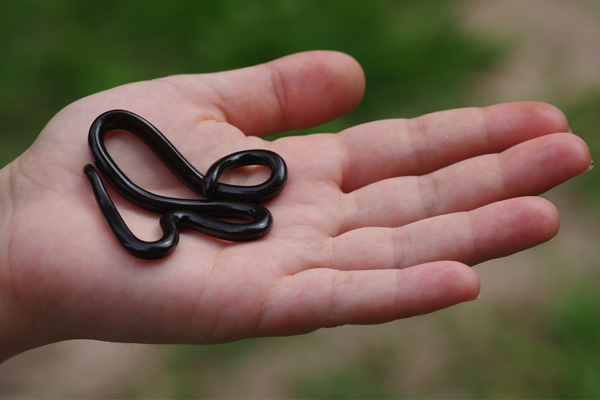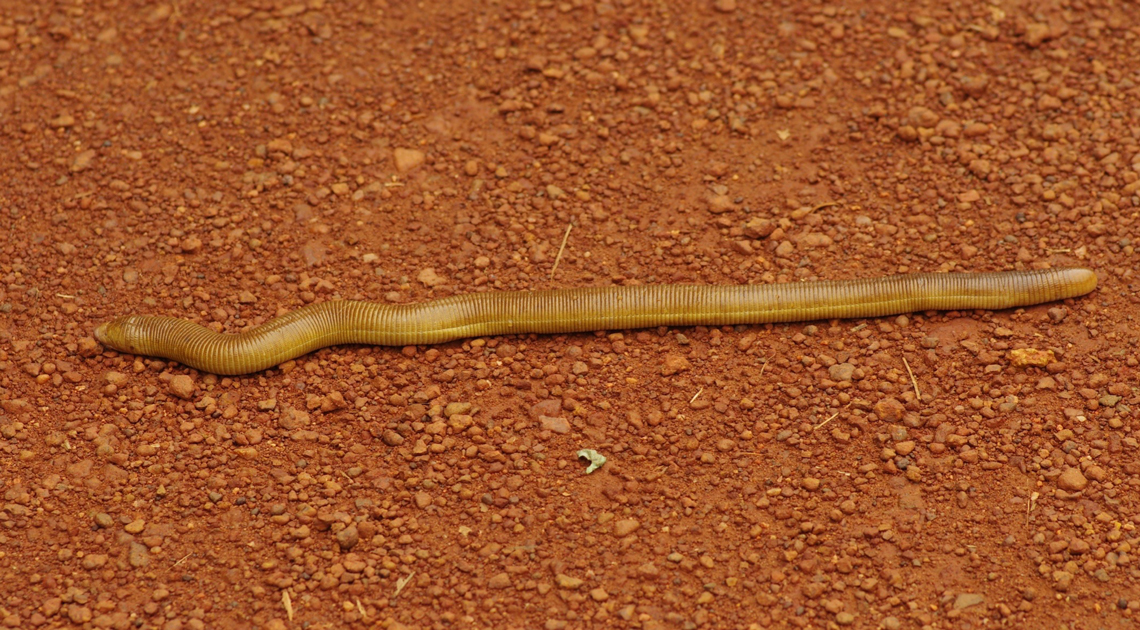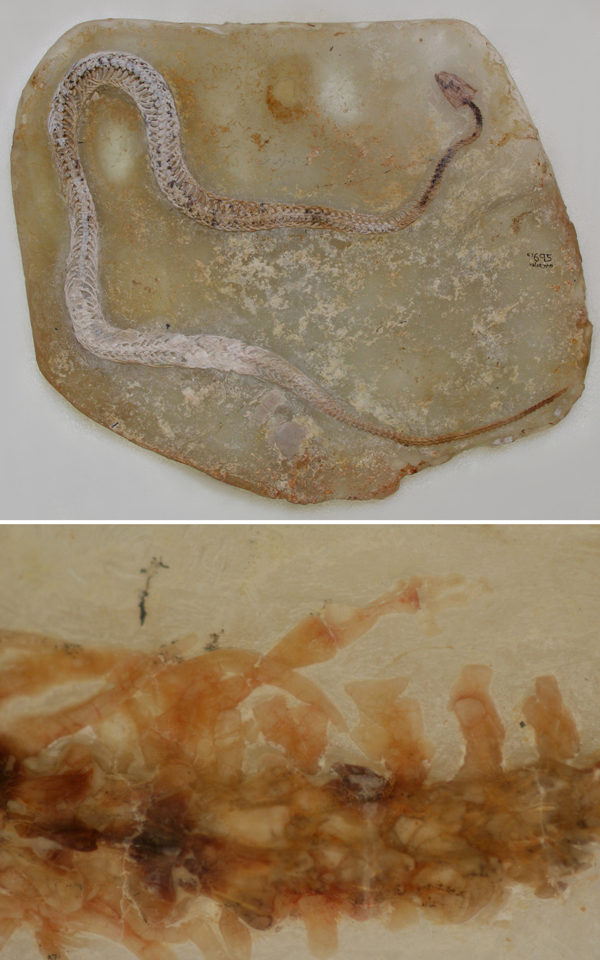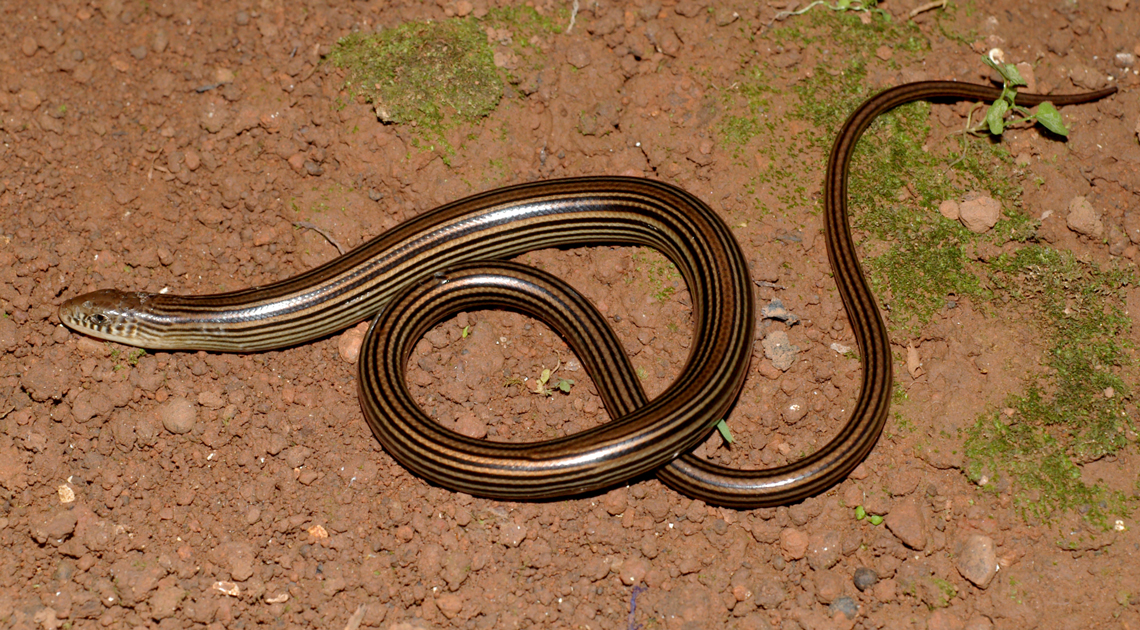At meal times, a snake can—or not—attack and snatch up its prey. It can kill it quickly by injecting a venomous substance that causes various effects on the victim’s body, such as necrosis and extensive neurological damage. It can also strangle and slowly swallow a meal much larger than itself. It can eat while hanging from the branches of a tree, under water, or on the ground, and can even dig in search of underground prey. The variety of feeding methods among species is huge, as is the size of the menu. It is surprising, even more so for a limbless animal. “Imagine going to a steakhouse and ordering a 30 kilogram [kg] steak of beef and swallowing it only using your mouth, without chewing or handling it,” compares biologist Guarino Colli, of the University of Brasília (UnB). He is the coauthor of an article published in February in the journal Science, which shows that this prodigious diet is a large part of the secret of success behind these animals: no other group is able to consume such varied diets, using such a large range of strategies.
“There were many authors on account of the geographical and taxonomic diversity included in the study about snakes,” explains the researcher. It is a major work because it includes the DNA sequencing of almost 7,000 species from around the world, which is a massive undertaking in itself, and it gave rise to the most reliable phylogeny ever obtained for Squamata, the order of reptiles that includes snakes and lizards and is the most diverse among terrestrial animals: it currently contains almost 11,000 species. Together with this evolutionary tree, the researchers also took information about the ecology (relationship with the environment) and morphology (appearance and anatomy) of the animals into consideration. “An individual is enough to get DNA and include a species on the tree, but it is not enough to trace the ecology and behavior that characterize it,” adds Colli. The leader of the group is evolutionist Daniel Rabosky, of the University of Michigan, in the USA, known for his work in the field of evolutionary statistics. “We formed a research network that has lasted for around three decades,” says Colli, listing students who have completed their training by moving between the research groups involved in the work.

Guarino Colli / UnBThe snake Liotyphlops beuiGuarino Colli / UnB
The big question is: why did the group of snakes become so different, with much faster evolution than seen in lizards? The answer, for the time being, is because of the prodigious diet added to an out of the ordinary sensory ability. By repeatedly sticking out its forked tongue and bringing it back into its mouth, a snake is able to produce a chemical map of its surroundings; some also sense variations in temperature as well. Not forgetting about the locomotion without feet. “Because of their unusual use of the environment, they inhabit an extremely specialized ecological niche that is theirs alone,” defines Colli.
Therefore, it is possible that the same ecosystem is home to a large diversity of snakes, without the competition for resources causing conflict between them. “In the region of Brasília, we have around 70 species,” says Colli. “The city of São Paulo also used to have a similar number when it had sufficient Atlantic Forest.” Like snakes, some species of lizards are also limbless, others have heightened sensory abilities, and there are even some that are able to eat large prey. But, from an evolutionary perspective, they are dead ends: they did not form diverse groups. Snakes, apparently, stood out because they adopted all of these strategies simultaneously, with great efficiency. The crucial thing here is the mobility of the skull, made up of bones that articulate and separate, opening the path for the meal that can be digested over the course of days.

Guarino Colli / UnBThe red worm lizard Amphisbaena albaGuarino Colli / UnB
By estimating dates for the branches of the evolutionary tree based on genetic data, the researchers noticed that the diversification of snakes happened very rapidly from around 65 million years ago, when an asteroid collided with the earth and caused the extinction of the majority of the dinosaurs. The fact that there was a rapid explosion in the number of species is not a complete surprise. “But the comparison with the other lineages of lizards had not yet been made,” ponders Colli. The results showed that the species that were emerging, quickly became very different from their ancestors—on an evolutionary time scale.
“The genomic revolution has a huge impact in this area,” assesses paleontologist Hussam Zaher, from the Museum of Zoology of the University of São Paulo (MZ-USP), who did not participate in the work. For him, the size of the databases used—spanning an immense set of DNA segments, skull shape, type of diet, body size, and ecology, with the ability to infer dates—allowed for a much greater breakdown of this evolutionary process than was previously available. “It is a brilliant study, very elegant, with a precise vision,” he assesses.

Hussam Zaher / USPHaasiophis terrasanctus, the ancestor of snakes, had tiny hind legs (above)Hussam Zaher / USP
Without detracting from the merit of laboratory and computational analyses, Colli highlights the importance of fieldwork. “The global-scale research relied on databases that would not exist if there were not so many researchers out collecting in the field.” Several authors of the article have accumulated three or four decades of experience in the wild, searching for and capturing animals. “In sum, it equates to a few centuries of effort.”
Enigmas still remain, however. “The origin of snakes has not been resolved,” states Zaher, who edited a book in 2022 precisely about the origin and evolution of the group with herpetologist David Gower, of the Natural History Museum of London. For the researcher from USP, knowledge of paleontology will be essential in this leap in knowledge. This is because phylogenetic trees are constructed from samples of the species that exist today. “We are unable to extract DNA from fossils,” he reminds us. Because the explosive emergence of species was accompanied by many extinctions throughout the evolutionary process, there are gaps in the evolutionary reconstruction.
He says fossils have been found that could be central to clarifying the unanswered questions, such as animals with many of the characteristics of current day snakes, but still with small legs. Additionally, although it is not possible to predict when new pieces of the puzzle will be found amongst the rocks, the drawers in paleontology museums may hold precious pieces. “There are fossils that were not well understood at the time they were collected and may be rediscovered,” he recognizes, adding that some recent results were obtained from “lost” specimens in museums.
Scientific article
TITLE, P. O. et al. The macroevolutionary singularity of snakes. Science. Vol. 383, no. 6685, pp. 918–23. Feb. 22, 2024.
Book
GOWER, D. J. & ZAHER, H. The origin and early evolutionary history of snakes. Cambridge: Cambridge University Press, 2022.
